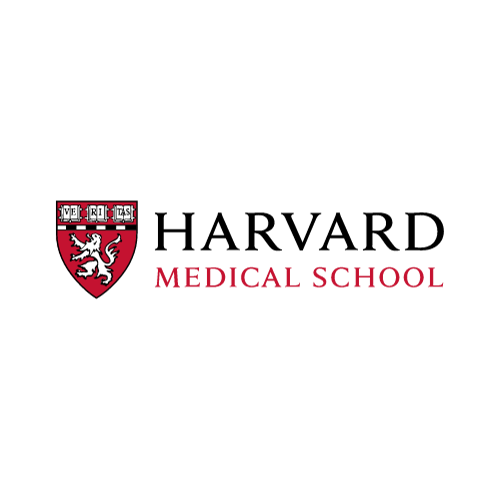
Jay S. Reidler, MD, MPH

Meet the Surgeon
- Founder & Director of Spine, Neck, & Back Specialists
- Board-Certified Surgeon Specializing in Adult & Pediatric Spine Surgery
- Specializing in Minimally Invasive Spine Surgery, Complex Neck, Back, & Scoliosis Surgery
- Asst. Clinical Professor, Department of Orthopaedic Surgery, Mount Sinai School of Medicine
Dr. Jay Reidler is an adult and pediatric spine surgeon who cares deeply about
helping those with spine conditions return to the activities that they love.
Dr. Reidler attended Harvard University for his undergraduate studies and graduated summa cum laude with a degree in Neurobiology. He received his MD from Harvard Medical School and his MPH from Harvard School of Public Health, concentrating in Healthcare Management and Policy. He completed orthopaedic surgery residency at Johns Hopkins School of Medicine, followed by the adult and pediatric spine surgery fellowship at NewYork-Presbyterian Och Spine Hospital/Columbia University.
Dr. Reidler also received specialized fellowship training at the Shriners Hospital for Children in Philadelphia, where he completed a dedicated complex pediatric spine surgery fellowship, as well as the University of Pennsylvania, where he trained in minimally invasive techniques and innovative approaches for treating complex adult spinal conditions. He has trained with both Orthopaedic and Neurosurgical leaders in the field of spine surgery, including the former Presidents of the Scoliosis Research Society (SRS), Cervical Spine Research Society (CSRS), North American Spine Society (NASS), and the American Association of Neurological Surgeons (AANS).
Passionate about caring for both adults and children, Dr. Reidler treats the full spectrum of spinal disorders from common disc herniations and sciatica to complex disorders of the neck and back such as scoliosis and conditions requiring revision surgery. He listens carefully to the concerns of patients and their family members and collaborates closely with other specialists involved in their care. Dr. Reidler personalizes treatment to each patient’s unique goals and will only recommend surgery when less invasive options are not succeeding. When offering surgery, his specialized experience in both minimally invasive and complex surgical techniques enables him to offer a wide range of innovative treatment options.
Dr. Reidler is an active member of multiple spine surgical societies including the Society for Minimally Invasive Spine Surgery, North American Spine Society, and AO Spine, and he is a candidate fellow of the Scoliosis Research Society. He has presented at national and international spine surgery conferences and published in leading medical journals and textbooks. He is particularly interested in improving safety and outcomes in spine surgery using advanced intraoperative navigation and robotic technologies.





Types of Spine Surgery
DISCECTOMY
This type of spinal surgery involves the removal of a herniated or damaged disc in the spine. During the procedure, the surgeon makes a small incision and removes the damaged portion of the disc. This relieves pressure on the spinal cord and nerves, and reduces pain. Discectomy is often done as a minimally invasive procedure, which means that the incision is small and the recovery time is shorter.
SPINAL FUSION
Spinal fusion is a surgical procedure that involves joining two or more vertebrae in the spine to create a single, solid bone. This is done to eliminate motion between the vertebrae and to stabilize the spine. Spinal fusion is often used to treat conditions such as spinal stenosis, herniated discs, and degenerative disc disease. The procedure involves placing bone graft material between the vertebrae, which then grows and fuses the vertebrae together over time. In some cases, metal plates, screws, or rods may also be used to provide additional support during the healing process.
LAMINECTOMY
This surgery involves the removal of the lamina, a part of the vertebra that covers the spinal cord. During the procedure, the surgeon makes an incision in the back and removes the lamina. This relieves pressure on the spinal cord and nerves, and reduces pain. Laminectomy is often done as a minimally invasive procedure, which means that the incision is small and the recovery time is shorter.
FORAMINOTOMY
This surgery involves the removal of bone or tissue that is compressing a nerve root as it exits the spinal column. The procedure is done to relieve pain and improve mobility. The surgeon makes a small incision and removes the bone or tissue that is compressing the nerve root. This relieves pressure on the nerve, which reduces pain and improves mobility.
MICRODISCECTOMY
This type of spinal surgery is similar to discectomy, but it is done using a microscope and specialized tools. The surgeon makes a small incision and uses the microscope to remove the damaged portion of the disc. This relieves pressure on the spinal cord and nerves, and reduces pain. Microdiscectomy is often done as a minimally invasive procedure, which means that the incision is small and the recovery time is shorter.
SPINAL REVISION SURGERY
Spinal revision surgery is a procedure done to correct a previous spinal surgery that did not achieve the desired outcome or resulted in complications. The procedure involves removing any hardware or implants that were placed during the previous surgery, as well as any damaged or scarred tissue. The surgeon then evaluates the spine to determine the best course of action to correct the issue, which may involve performing a spinal fusion, laminectomy, discectomy, or other type of spinal surgery.

